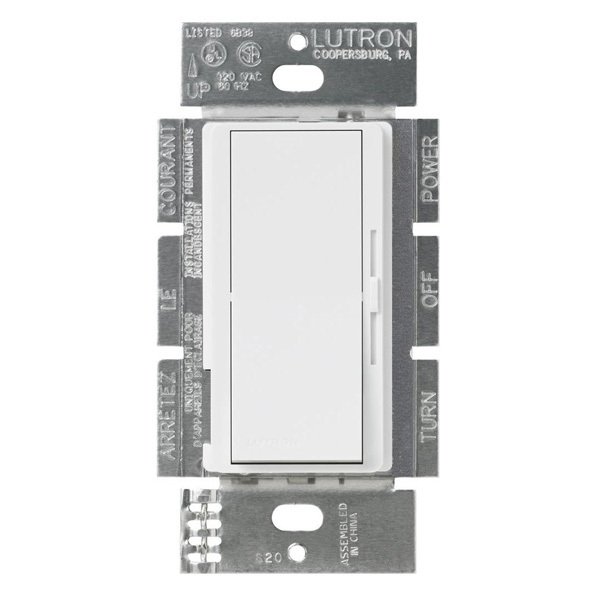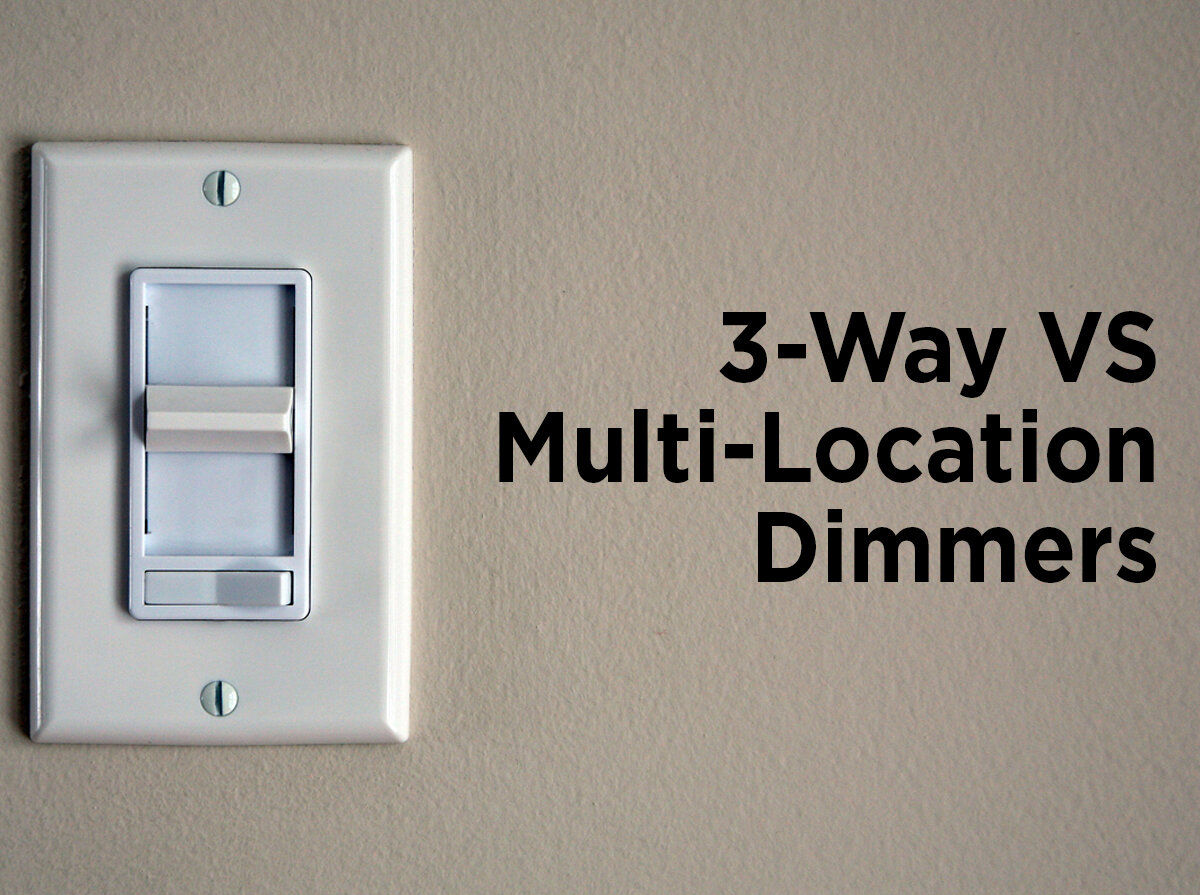How to Know Your Dimmer Switch is Compatible with Your Bulbs
Updated 10/19/23 by 1000Bulbs Staff
Whether you enjoy the flexibility to create the ambiance you want by setting the light level of a room, or you desire to save money by keeping your lights dimmed as often as possible to extend the life of your bulbs, dimmer switches are a great accessory for flexible lighting.
Dimming your lights isn't as simple as installing any dimmer switch, however. Not all dimmers work for all fixtures and lamps. With so many options on the market, it is essential to pair the right dimmer switch with the right fixture and light bulbs to achieve proper functionality. Incompatibility can result in problems such as flickering lights, bulbs that do not dim properly, or even the generation of heat due to a poorly regulated flow of electricity.
Avoid such issues by ensuring your dimmer switch is compatible with your light bulbs, whether using incandescent, halogen, or LED bulbs.
Which Dimmer Switches are Compatible with Incandescent or Halogen Bulbs?
If you've got an incandescent or halogen bulb, finding the correct dimmer switch is simple. Any dimmer switch is compatible with incandescent or halogen lamps as long as the following conditions are met:
The dimmer switch is rated for the same voltage as the lighting application. Use a standard dimmer switch on 120V applications. Low voltage dimmers are needed for 12V and 24V setups.
The total wattage of all lamps is less than or equal to the maximum wattage rating on the dimmer switch.
Overloading the wattage is unlikely if the switch is controlling only one bulb. However, for applications such as track lighting or recessed can lights where multiple lamps are controlled at once, simply add up the total watts for all bulbs. For example, a 600 Watt dimmer switch can support up to eight 75 Watt lamps.
Determining if Your Dimmer Switch and LED Lights are Compatible
When it comes to working with newer lighting technology on the market today, such as LED light bulbs, determining which dimmer switches will work properly can be more tricky.
It's a common misconception that any LED dimmer can be paired with any dimmable LED bulb. Unfortunately, that is not the case. To ensure compatibility between specific LED lamps and dimmer switches, check the manufacturer's spec sheet or compatibility sheet for the lamps and/or the dimmer switch.
Finding and Using Compatibility Sheets
At 1000Bulbs.com, these PDFs are available under Brochures & Spec Sheets in the Details section on the item's product page (see photo below for details). If you have a dimmer switch already and are looking for new LED lighting, check to see if the switch is listed on the LED bulb Spec Sheet or Compatibility Sheet prior to purchase.
If you already have LEDs, find the product page for the bulbs and check the PDF for a list of compatible dimmers. The dimmer compatibility information will likely be found on the Compatibility Sheet for the bulbs rather than the dimmer.
If your dimmer isn't listed on the Dimmer Compatibility Sheet, it is possible that the specific lamps simply haven't been tested with that particular dimmer switch. If you need confirmation of compatibility, contact the bulb manufacturer for verification. Additionally, the sheet will often list compatible dimmers by the manufacturer part number or catalog code, making it simple to find one ideal for your application.
Signs of Incompatibility Between Dimmer Switches and Lamps
Whether using a dimmer for under cabinet lighting or overhead lighting, the signs of the devices being incompatible are simple. The most common include the light bulb blinking, flickering, humming, or not dimming properly.
Other dimmer compatibility issues include:
Drop Out - the light cuts out suddenly prior to reaching the bottom of the dimming range.
Pop on - the lights brighten suddenly at a certain point when turning the lights to full brightness.
Unresponsive bulbs - the lights remain constant for some or all of the dimming scale, not responding to dimmer switch adjustments.
If you experience any of these issues, turn off the lights and start troubleshooting. Chances are, there's nothing wrong with the dimmer or the lights. The two are just simply incompatible.
Troubleshooting Dimmer Compatibility
When troubleshooting issues with your lights and dimmer switch, there are several simple steps to help you find and correct the problem.
First, make sure that your lights are dimmable. If the lamps are not dimmable, even the best dimmer switch won't work. If your bulbs are dimmable, then double-check compatibility between the lamps and dimmer. Next, confirm that the lamps do not exceed the maximum wattage of the dimmer.
If all of these things are in the clear, you may consider having an electrician check the fixture.
For fluorescent lights, the fixture's ballast may be the culprit if you've replaced the bulbs and confirmed compatibility between the lights and dimmer. Signs of a bad ballast also include flickering and humming, so if everything is compatible, hiring an electrician to inspect the light fixture is the best next step. The fixture could also have issues if running on a higher voltage than indicated by the socket, which brings us to low-voltage dimming.
Magnetic and Electronic Low-Voltage Dimmers
Low-voltage lighting is common in residential and commercial applications, including display lighting, track lighting, and landscape lighting. Using a lower voltage extends the lifespan of the lamps and increases safety, especially in landscape lighting where a poorly buried wire is at risk of being hit by weed choppers or lawnmowers.
When dimming low-voltage bulbs, a magnetic or electronic transformer is needed to step down the voltage. Magnetic and electronic dimmers cannot be used together on the same circuit. Use magnetic low-voltage dimmers with magnetic transformers and electronic low-voltage dimmers with electronic transformers.
Do not use regular incandescent dimmers with magnetic low-voltage lights. 120-Volt incandescent dimmers can contain small amounts of DC voltage, which can damage magnetic transformers.
0-10 Volt Dimmers
While 0-10V dimming was originally designed for CFLs, it is now also used for dimming LED lamps in commercial applications. Fixtures set up for 0-10V dimming have a third wire that applies a direct current voltage (DC) between 0 and 10 Volts to vary the intensity of the light. A fixture compatible with 0-10V dimming must have a 0-10V LED driver, which may be included in the fixture or may be external as is the case with LED tape light.
In many cases, if the fixture is compatible with 0-10V dimming, you can use any 0-10V dimmer compatible with that technology. Because 0-10V dimmers all work similarly, some products are compatible with all 0-10 Volt dimmers. If this is the case for a product listed on 1000Bulbs.com, it can be found in the description as well as in the PDFs.
Contact 1000bulbs.com for Help Finding the Right Dimmer
If you're not sure what type of dimmer you need, you can call our lighting experts at 1-800-624-4488 or leave us a comment below. Our team is happy to assist you in pairing the right bulbs and dimmer controls.













